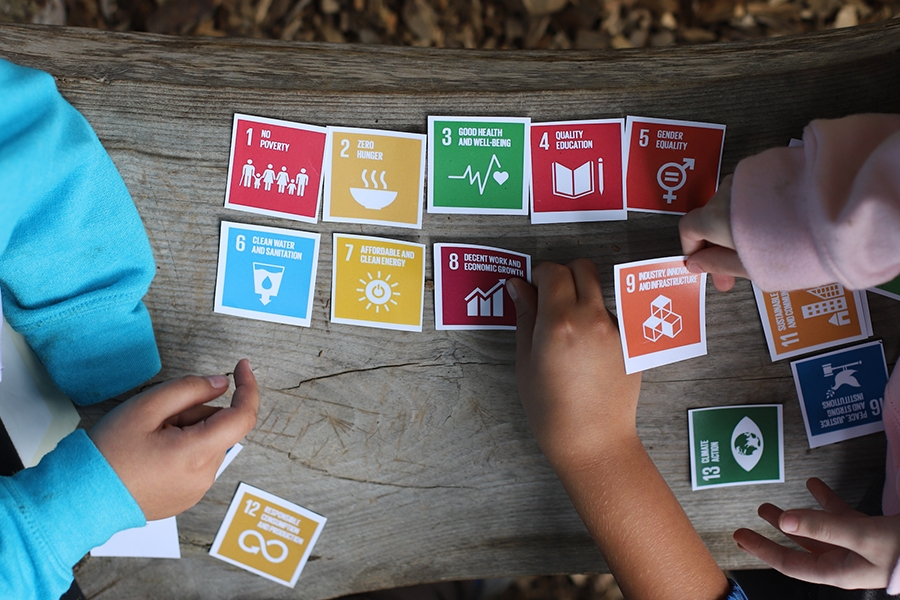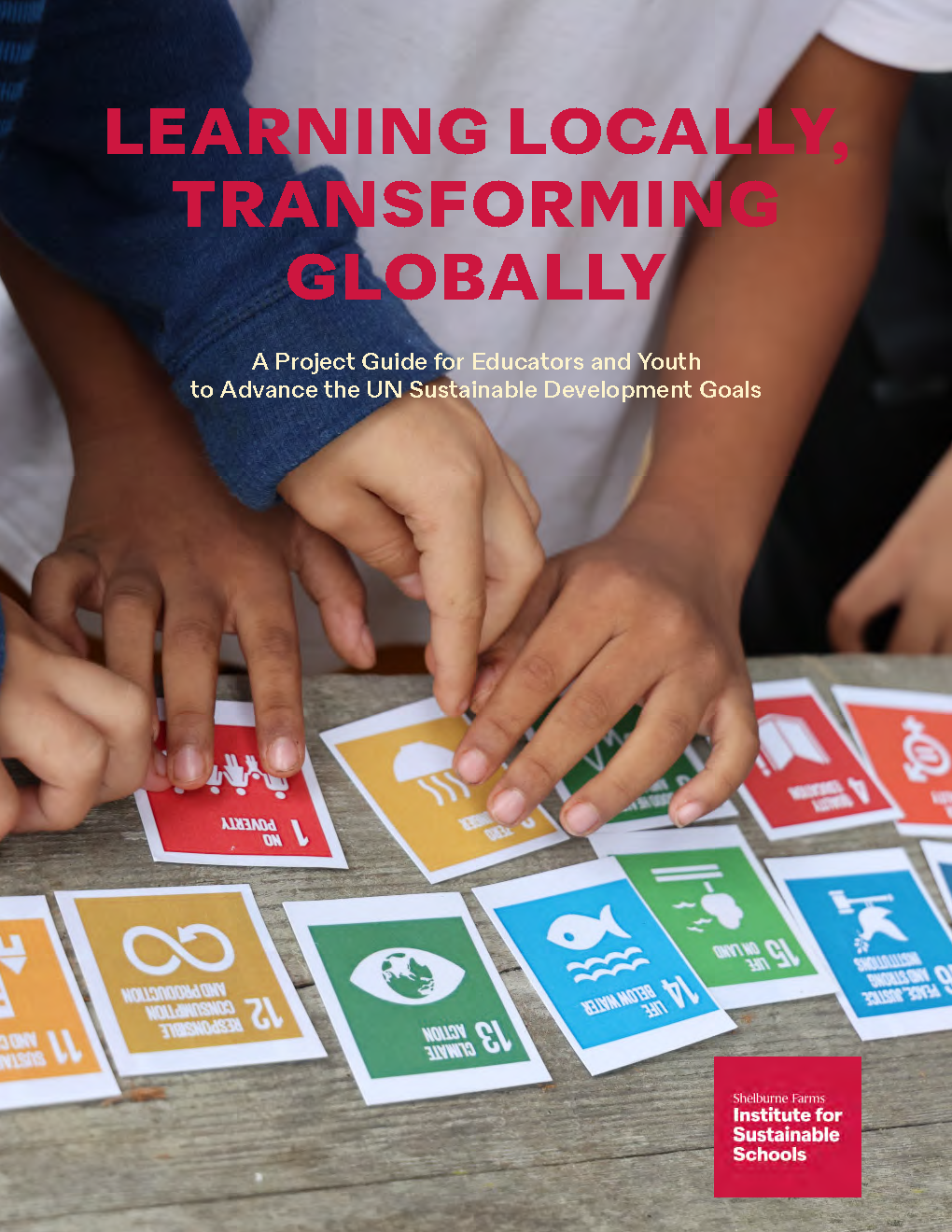Introducing Our New Resource "Learning Locally, Transforming Globally"

Plastic pollution and trash burning are big problems in rural Nepal. Middle schoolers at the Kopila Valley School in Nepal’s Surkhet District decided to try and help; they learned about the harmful effects of pollution, developed an educational campaign, researched alternatives to plastic, and created and distributed cloth bags in their community.
This is just one example of ways students from Nepal to Vermont have used the same framework for addressing global challenges in their own communities. These steps are laid out in a new resource from Shelburne Farms Institute for Sustainable Schools, Learning Locally, Transforming Globally.

Above: Activities in Learning Locally have been used from Nepal (left) to Nigeria, Ukraine to Vermont (right).
“We’ve seen over and over again that by teaching toward sustainability with a focus on making community connections, we can truly change the world, one community at a time,” says Jen Cirillo, Shelburne Farms Institute for Sustainable Schools director of professional learning and a co-author of the resource.
Step by step, Learning Locally engages learners in making change on a local or regional level via a school or community action project. It’s an Education for Sustainability approach that is paired with the United Nations Sustainable Development Goals, so along the way, learners develop the sense of agency they will need throughout their lives to tackle the challenges we face as a global community.
In 2015, the United Nations established 17 Sustainable Development Goals (SDGs) as “a universal call to action to end poverty, protect the planet and ensure that all people enjoy peace and prosperity.” The SDGs provide a blueprint toward sustainability by setting targets for economic, social, and ecological systems improvement with a deadline of 2030.
“Tackling complex, global issues like climate change, poverty, food insecurity, and racial inequities can be overwhelming for young people. The SDGs give young learners a place to start,” explains Cirillo. “Actively engaging youth as leaders in implementing local solutions to global challenges demonstrates that they have the power to make a difference, encouraging a lifelong commitment to service and creating sustainable communities.”
Learning Locally is designed for K–12 educators in formal and informal education settings.

